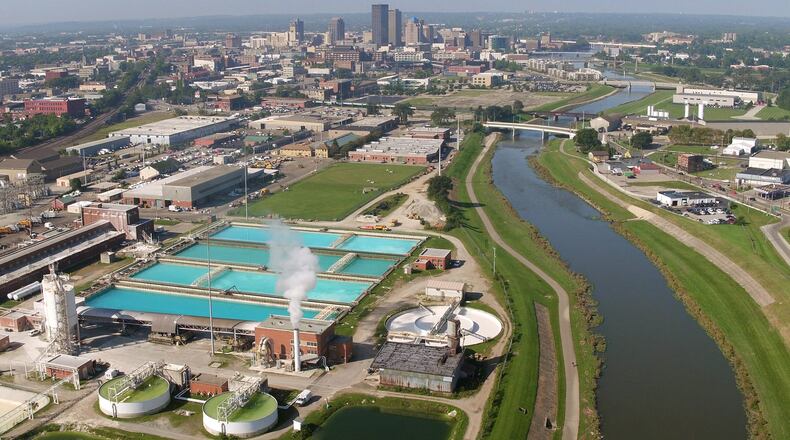ALL IN ONE SPOT: Coronavirus main page has links to dozens of stories
The Ohio EPA officially kicked off the testing program at the beginning of March. Of the water systems tested in eight Southwest Ohio counties so far, all were determined to be safe, according to Ohio EPA.
The testing is part of Ohio’s PFAS action plan — released in December — to determine if the contaminants are present in drinking water. The plan was to start with the 245 schools and daycare facilities across the state that have their own public water systems.
“These systems were prioritized under the action plan because they serve sensitive populations of children,” Griesmer said.
The state’s EPA and health department developed the plan last summer in an effort to address potential threats to both public and private drinking water systems.
PFAS, or per-and polyfluoroalkyl substances, were once widely used in manufacturing, carpeting, upholstery, food packaging and other commercial and military uses. Notably, the substances were — and still are, in some places — used to extinguish fires that couldn’t be extinguished with water alone.
PFAS-based foams were formerly used at the city of Dayton Fire Training Center during testing exercises. The foams also have been used in exercises and actual fires at Wright-Patterson Air Force Base. Both sites are located above the aquifer that supplies the region’s drinking water.
READ MORE: Dayton sues PFAS manufacturers
Levels of PFAS were discovered in both Dayton and Wright-Patt drinking water supplies several years ago and both took the appropriate steps to minimize the risk to people, the Ohio EPA has said.
Ohio EPA’s PFAS action plan and the testing will not affect the city of Dayton, which supplies drinking water to more than 400,000 people, including Montgomery County residents, Dayton Water Director Michael Powell has said. That’s because the city already monitors the raw and effluent water at both of its water treatment plants monthly, he said, noting that results are sent to the state.
Before testing was suspended, the Ohio EPA sampled 229 of the state’s 245 schools and daycare facilities for PFAS, Griesmer said. The agency received laboratory results for 222 of the tests, with 199 schools and daycare facilities’ water systems were non-detect for PFAS, meaning the level of contaminants were below the reporting limits. The U.S. EPA has set a health advisory for chemicals, recommending drinking water not contain PFAS above 70 parts per trillion.
RELATED: What Dayton learned after the unprecedented water outage 1 year ago
In Southwest Ohio, the Ohio EPA tested at least one public water system each in Champaign, Clark, Darke, Greene, Logan, Mercer and Miami counties.
The Ohio EPA hired three contractors to conduct the tests, Griesmer said. The contractors collected the water samples, which were sent to labs for testing, and the results were given to the state.
Municipalities have the option of conducting their own tests and sending the results to the state, as long as they follow the same collection procedures and methods as Ohio EPA. They also must meet the quality assurance results and agree to allow the agency to post the results on its website, Griesmer said.
MORE COVERAGE: Montgomery County saw record water main breaks. How it will fix its aging systems
Although testing has been suspended, the Ohio EPA will continue reviewing incoming results for all sampling that were completed prior to March 16, Griesmer said.
“PFAS testing remains a priority of this administration, and Ohio EPA will resume coordination of sampling and testing of all remaining public water systems under the action plan, as soon as we are able to have our contractors back out to sample these systems,” Griesmer said. “At this time, we do not have a specific timeframe on when this will occur, but we intend to re-mobilize as soon as it is safe to do so.”
Public drinking water systems in Southwest Ohio that have been tested for PFAS so far
Champaign County: 6 of 27
Clark County: 7 of 40
Darke County: 3 of 14
Greene County: 1 of 23
Logan County: 3 of 42
Mercer County: 2 of 16
Miami 4 of 15
About the Author
